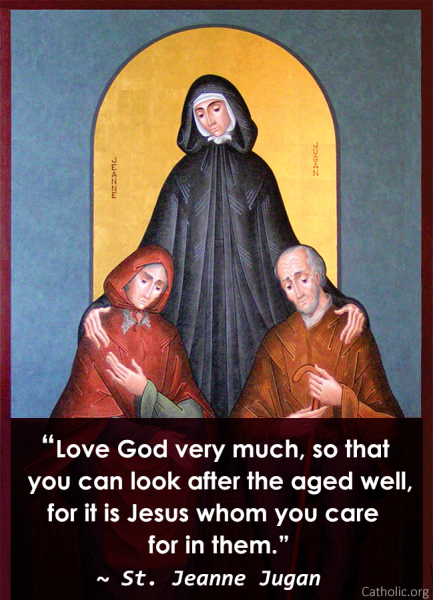 Saint Jeanne Jugan (1792-1879)
Saint Jeanne Jugan (1792-1879)
Image Courtesy: Catholic Online
(CNA) In his homily for the Canonization of Saint Jeanne Jugan on the 11 October, 2009 Pope Benedict XVI praised St. Jeanne as a “beacon to guide our societies” adding:
“Jeanne Jugan was concerned with the dignity of her brothers and sisters in humanity whom age had made more vulnerable, recognizing in them the Person of Christ Himself. ‘Look upon the poor with compassion,’ she would say, ‘and Jesus will look kindly upon you on your last day.’ Pope Benedict recalled how Jeanne, “lived the mystery of love, peacefully accepting obscurity…Her charism (good gift that flows from God) is ever timely while so many elderly people are suffering from numerous forms of poverty, solitude and are sometimes abandoned by their families.”
Born in France Brittany, Jeanne grew up during the political and religious upheavals of the French Revolution. Four years following her birth, her father was lost at sea. Jeanne’s mother struggled to provide for Jeanne and her 3 siblings, while also providing them ‘secretly’ with religious instruction amid the ant-Catholic persecutions of the day.
At the age of 15 or 16 Jeanne became a kitchen maid for a family that not only cared for its own family members according to Franciscan Media but also served the poor and elderly people nearby. When Jeanne was 18 and again 6 yrs later, she declined two marriage proposals from the same man, telling her mother, that God had other plans and was calling her to “a work which is not yet founded.”
When Jeanne was 25 yrs old she would join a religious order founded by St. John Eudes (Feast Day: 19 August) Jeanne became a Nurse at the hospital at Le Rosais for six years but later had to resign her position due to health issues, subsequently she became a servant and a friend of a Woman she met through the religious order. They would pray together, visit the poor and taught Catechism to children.
Following Jeanne’s friend’s death, she and two other Women (one an older Woman and a orphaned young lady) carried on a similar life of charity in the city of Saint-Sevran — During 1839 it was a year of economic hardship, Jeanne and the other two Women met Anne Chauvin, an elderly, blind Woman, partially paralyzed and had no one to care for her, she became the first permanent guest of Jeanne and the other two Women.
Soon thereafter Jeanne and her two companions, took in two more elderly Women in need of help and by 1841 Jeanne had rented a room to provide housing for a dozen elderly men and women. — The following year, Jeanne acquired an unused Convent building that could house 40 people.
During the 1840s many other young Women joined Jeanne in her mission of service to the elderly poor, by soliciting charitable gifts by others, Jeanne was able to establish 4 additional homes for the elderly poor by the end of the decade.
By 1850 over 100 Women joined Jeanne’s religious order which today is known as the Little Sisters of the Poor and by 1853 the association numbered 500 Women and had houses as far away as England.
Pope Leo XII would give final approval of the Little Sisters of the Poor constitutions in 1879 which by then had 2,400 houses for the elderly poor. Jeanne would later pass away on this date that same year.
Jeanne was Beatified in 1982 by Pope Saint John Paul II and Canonized in 2009 by Pope Emeritus Benedict XVI
Related: Why Charles Dickens Cried When He Met St. Jeanne Jugan -Natl Catholic Register
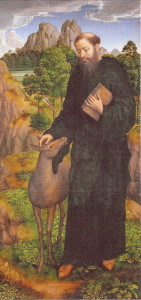
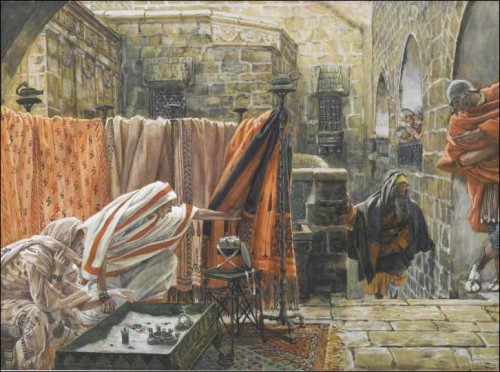 Saint Joseph of Arimathea Asking Pilate for the Body of Jesus
Saint Joseph of Arimathea Asking Pilate for the Body of Jesus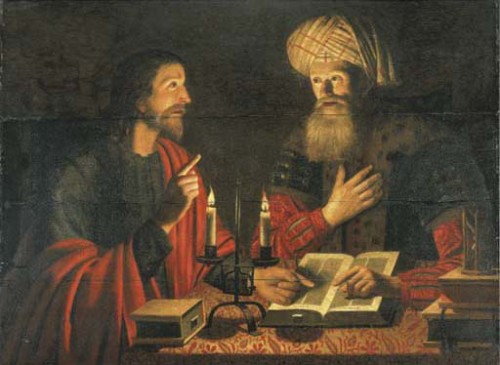 Jesus and Nicodemus –Image:
Jesus and Nicodemus –Image:  Saint Jeanne Jugan (1792-1879)
Saint Jeanne Jugan (1792-1879)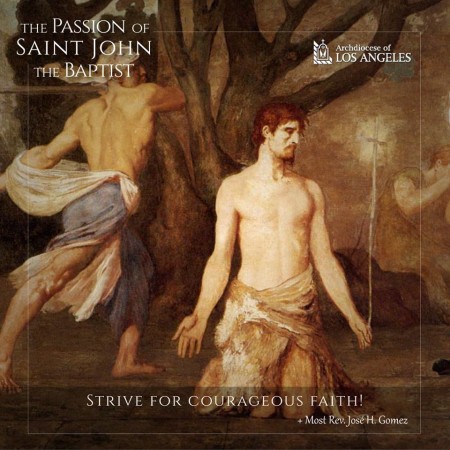 Martyrdom of St. John the Baptist
Martyrdom of St. John the Baptist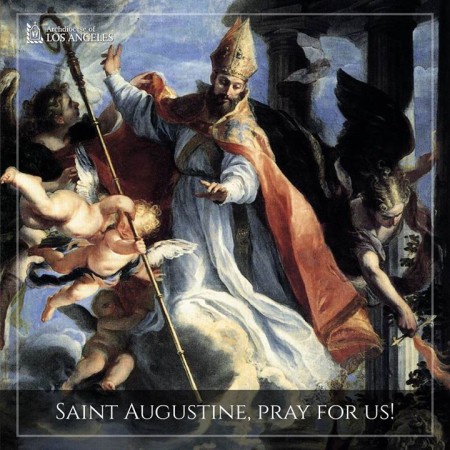 Saint Augustine of Hippo (354-430)
Saint Augustine of Hippo (354-430)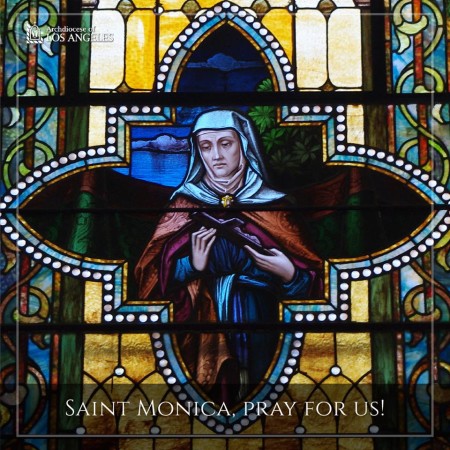 Saint Monica (322-387) Image: Archbishop Jose Gomez
Saint Monica (322-387) Image: Archbishop Jose Gomez 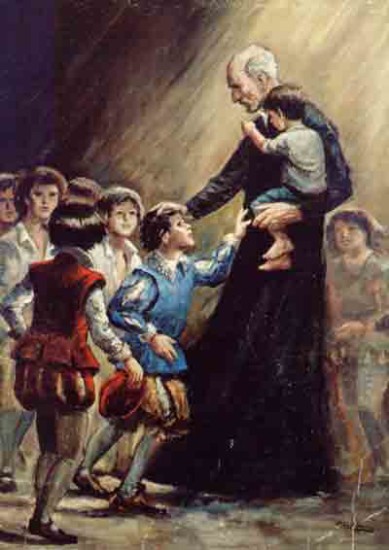 Saint Joseph Calasanz (1556-1648) Image: Introibo
Saint Joseph Calasanz (1556-1648) Image: Introibo 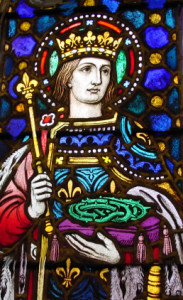
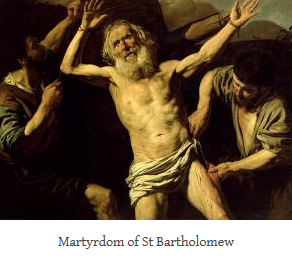
 Saint Rose of Lima (1586-1617)
Saint Rose of Lima (1586-1617)